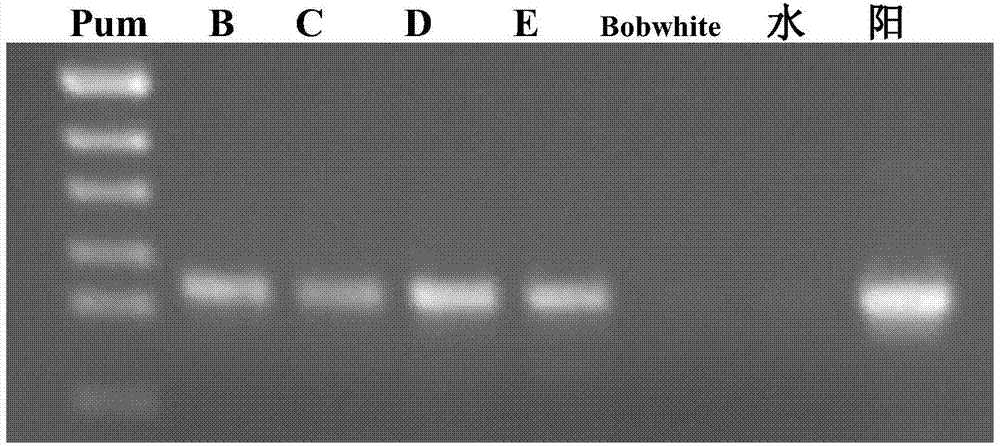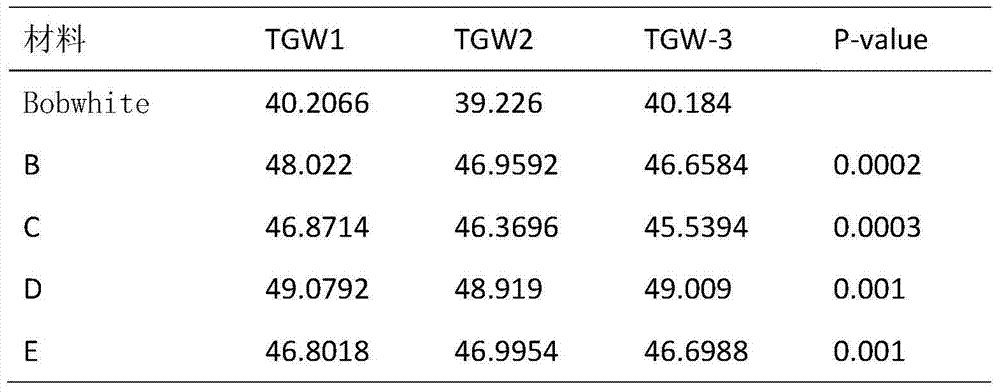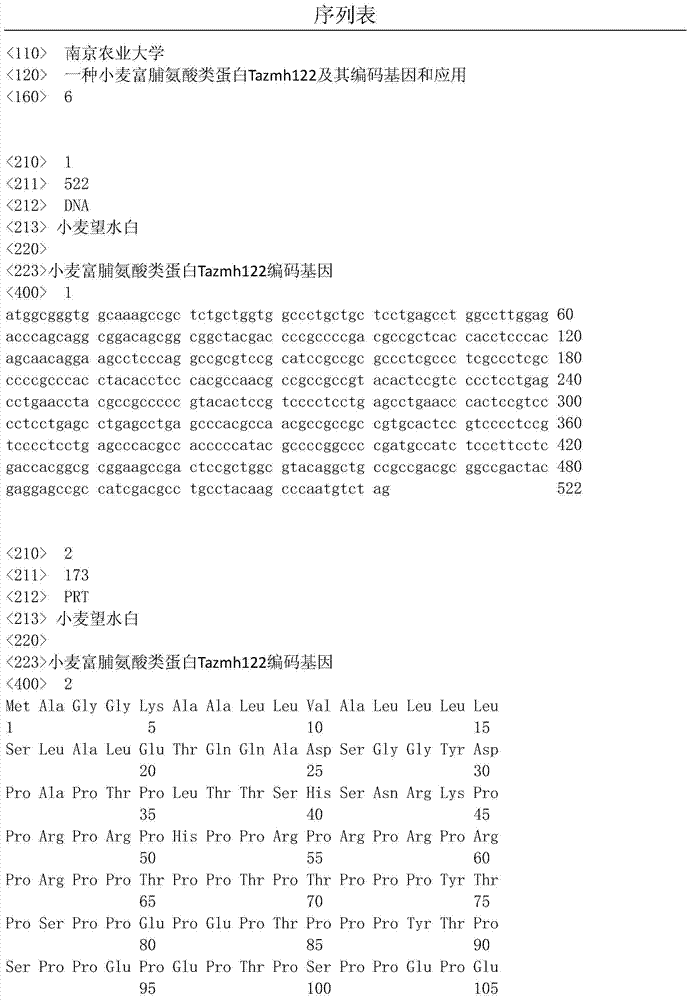Wheat proline-rich protein Tazmh122, coding gene and application thereof
A proline-rich, wheat-based technology, applied in the field of genetic engineering, can solve problems such as the lack of knowledge about the exact function, and achieve the effect of increasing the thousand-grain weight
- Summary
- Abstract
- Description
- Claims
- Application Information
AI Technical Summary
Problems solved by technology
Method used
Image
Examples
Embodiment 1
[0022] Example 1 Obtaining of Tazmh122 protein.
[0023] Record the flowering time of each panicle floret of wheat variety Wangshuibai, take the seeds 3 days and 10 days after flowering, and freeze them with liquid nitrogen immediately after taking the materials. Take 700mg of frozen seeds, add 70mg of PVP, grind into powder in liquid nitrogen, add 5mL of 10% trichloroacetic acid / acetone, shake and mix, precipitate at -20°C for 1 hour; centrifuge at 15,000g at 4°C for 15min, and resuspend the precipitate in 5mL Place in cold acetone at -20°C for 2 hours; centrifuge at 15,000g at 4°C for 15 minutes, suspend the precipitate in 80% cold acetone, place at -20°C for 1 hour, centrifuge to remove acetone, and dry the precipitate into powder. Add 10 μL of lysate (7M urea, 2M thiourea, 4% CHAPS, 1% CA, 0.3% protease inhibitor, 50U / mL DNase I) to every mg of dry powder, stir and extract at 4°C for 15 minutes before adding 14mM DTT; stir at 4°C for 20 minutes, then centrifuge at 35,000g...
Embodiment 2
[0024] Example 2: Obtaining the cDNA sequence encoding Tazmh122 protein.
[0025] The protein spots obtained in Example 1 were analyzed by mass spectrometry to obtain their amino acid composition information, and the ESTs of the corresponding peptide fragments were used to search the wheat EST database, and four EST sequences were obtained: BM135088.1, BJ250155.1, CN007768.1 and BJ244353 .1. Splicing the above four EST sequences, and then using MacVector software to design primer P1, P1 primer pair is as follows: F-5'-ATGGCGGGTGGCAAAGCCGCTCTGC-3' (SEQ ID NO.3); R: 5'-CTAGACATTGGGCTTGTAGGCAGGC-3 ' (SEQ ID NO. 4). Using the seed cDNA 3 days after flowering of Wangshuibai as a template, the total RNA of wheat seeds was extracted with the Trizol kit from Yingjun Company, and reverse-transcribed with the reverse transcription kit from Promega Company to synthesize single-stranded cDNA. Use primer P1 for PCR amplification, the amplification system is 25 μL, including 5ng template, ...
Embodiment 3
[0026] Example 3: The thousand-grain weight of transgenic Tazmh122 wheat is increased.
[0027]Using the seed cDNA 3 days after flowering of Wangshuibai as a template, PCR amplification was performed using primer P2. The P2 primer pair is as follows: F‐5'‐GTACCTGCAGATGAAGATGGGCCCGT‐3' (SEQ ID NO.5); R‐5'‐TGCACTGCAGTCAAACCCCAAGTTTG -3' (SEQ ID NO. 6). After the amplified PCR product was digested with restriction endonuclease PstI, it was ligated with the PBI121 expression vector that was digested with the same restriction endonuclease to obtain the overexpression plasmid of TaJRL2 initiated by the CaMV35S promoter carrier. The constructed vector was transformed into DH5α Escherichia coli strain by heat shock method, and screened by LB medium containing 50 μg / mL kanamycin to obtain positive clones. Referring to the materials and methods in the article published by Weeks in Plant Physiol No. 102, page 1077-1084 in 1993, the callus produced by short-term culture of immature embr...
PUM
 Login to View More
Login to View More Abstract
Description
Claims
Application Information
 Login to View More
Login to View More - R&D
- Intellectual Property
- Life Sciences
- Materials
- Tech Scout
- Unparalleled Data Quality
- Higher Quality Content
- 60% Fewer Hallucinations
Browse by: Latest US Patents, China's latest patents, Technical Efficacy Thesaurus, Application Domain, Technology Topic, Popular Technical Reports.
© 2025 PatSnap. All rights reserved.Legal|Privacy policy|Modern Slavery Act Transparency Statement|Sitemap|About US| Contact US: help@patsnap.com



